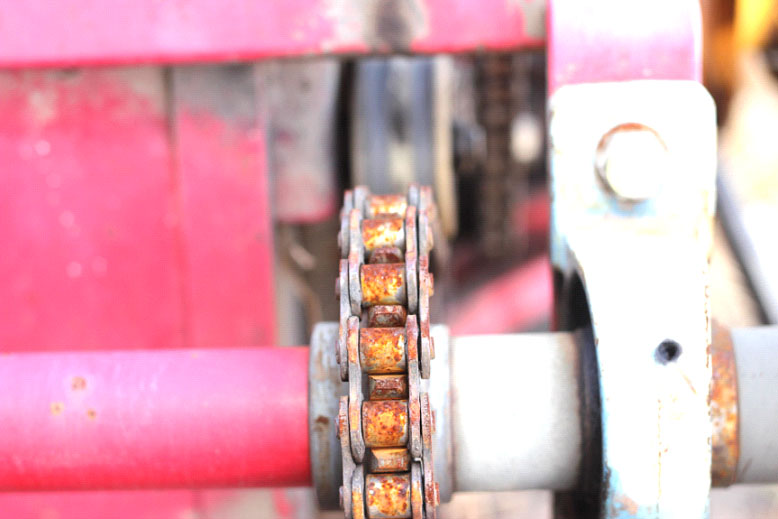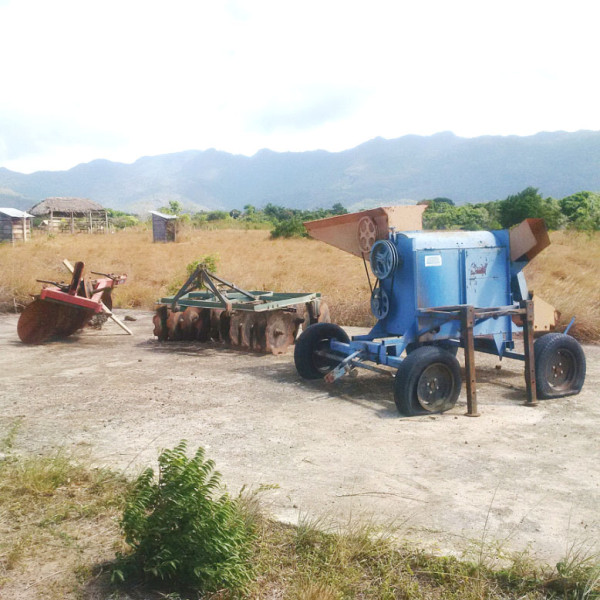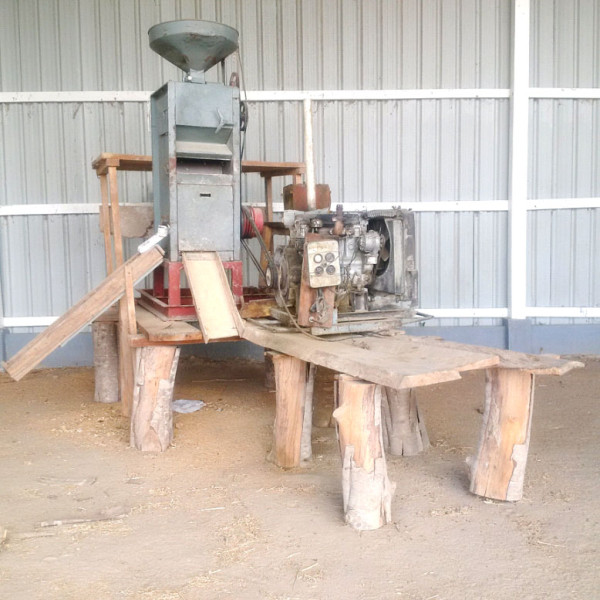The harvester stood forlornly in the flatlands, encircled by tufts of dead, brown grass and shrubs in a field that once gleamed with golden, ripening paddy in the shadows of the Kanuku Mountains.
Over 16 months since it broke down, the harvester is yet to be fixed despite promises by the Guyana Rice Develop-ment Board (GRDB) to do so, William Ramsarran, the deputy toshao of Moco Moco told Stabroek News during a visit to the Region Nine community last week. Patches of rust now cover parts of the harvester which broke down since September 2014. It is a critical piece of machinery for reaping the rice grown by the indigenous community and its breakdown has stymied the growing of the crop. It also appears that other parts are missing.
The rice venture at Moco Moco started in 2009 as part of the Hinterland Rice and Beans Project, a $128 million scheme funded by the Spanish Agency for Inter-national Cooperation for Development in partnership with the Government of Guyana, the Ministry of Agriculture and the GRDB.
The community has successfully harvested dozens of acres of paddy but since last year, has not done any large scale planting due to the breakdown of the harvester. Ramsarran said the GRDB remains in charge of the project but has not fixed the piece of equipment to date despite promises to do so.
“They haven’t told us anything as yet up to now,” he said, though he also recalled that the GRDB manager said last month that they would look after the harvester before the next crop. “We only hoping that they will do it this year,” he added.
The village leader noted that the village also has two mills and one has not been working for several years now but the other is working.
Ramsarran said the village continues to hope that the harvester will be fixed so that they can continue the rice project. He said if this is done, by the end of this year’s harvest as per agreement between the GRDB and the village, the project would be handed over to the village.
The village leader also noted that climate change is affecting the rice as weather patterns now being experienced are changing with there being a shorter rainy season. He said the rainy season normally begins in April and ends in August or September. However, for the past few years, the rainy weather begins in June and ends in August, he said.
The land where rice is normally sown is also currently affected by the prolonged drought caused by the El Nino weather phenomenon and it is too costly to pump water to the field, Ramsarran said. He said they have an eight-inch pump but it is not enough in the dry season. He related that the village has identified a piece of flatland, along the Moco Moco creek where they plan to sow the next crop.
He said that they normally start preparing the ground for the rice in March or April and this year, hope to have rains at least by May/June to sow the rice and also hope that by then, the harvester would be fixed.












